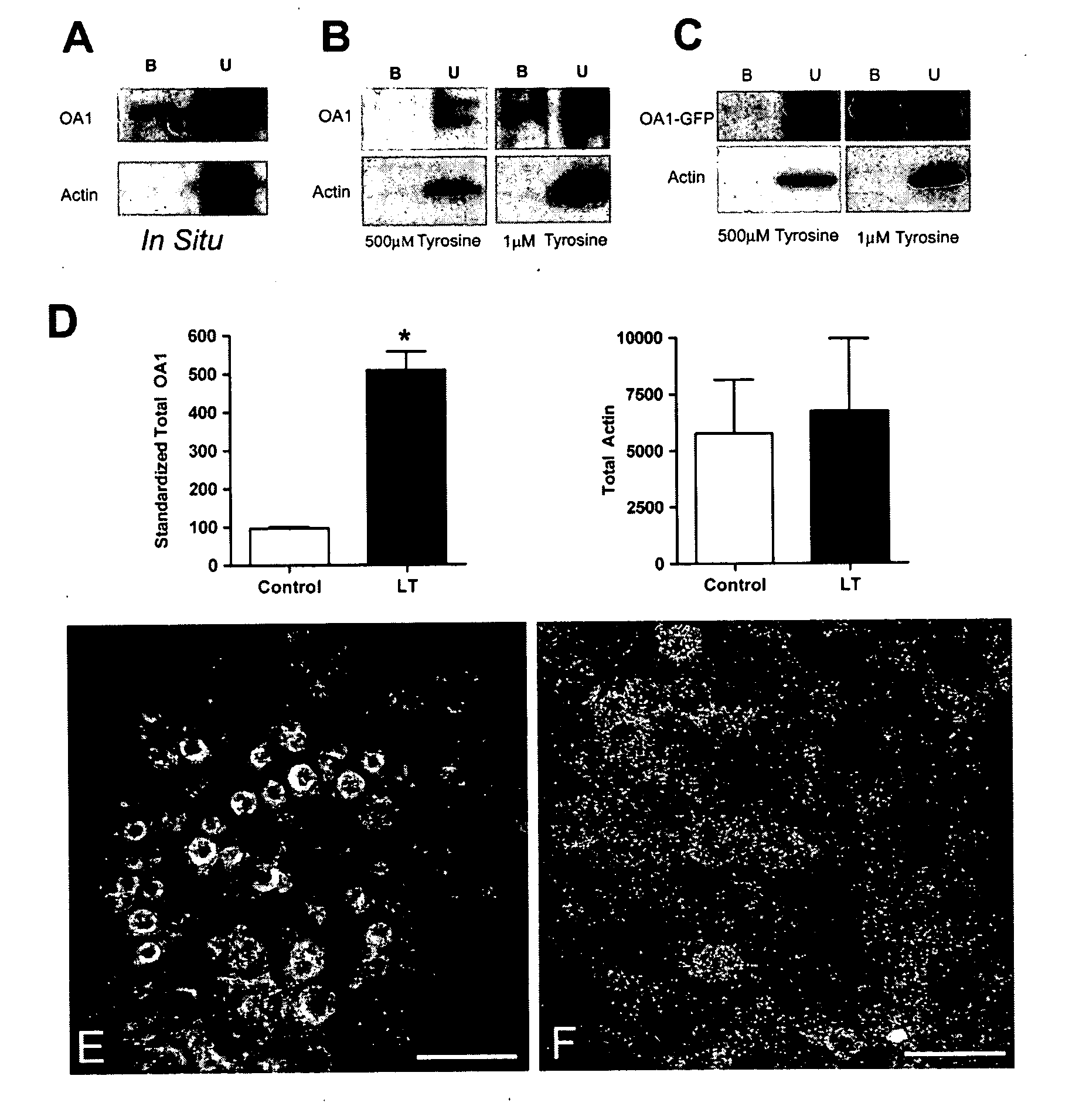Methods and Compositions for Treating and Identifying Compounds to Treat Age-Related Macular Degeneration
a technology of age-related macular degeneration and compound, applied in the field of methods, can solve the problem of not having an effective treatment option for most patients, and achieve the effect of limiting development and increasing photoreceptor and/or retinal ganglion developmen
- Summary
- Abstract
- Description
- Claims
- Application Information
AI Technical Summary
Benefits of technology
Problems solved by technology
Method used
Image
Examples
examples
L-DOPA is an Endogenous Ligand for OA1
[0275]Background: Albinism is a genetic defect characterized by a loss of pigmentation. The neurosensory retina, which is not pigmented, exhibits pathologic changes secondary to the loss of pigmentation in the retina pigment epithelium (RPE). How the loss of pigmentation in the RPE causes developmental defects in the adjacent neurosensory retina has not been determined, but offers a unique opportunity to investigate the interactions between these two important tissues. One of the genes which causes albinism encodes for an orphan GPCR(OA1) expressed only in pigmented cells, including the RPE.
[0276]Methodology / Principle Findings: The function and signaling of OA1 was investigated in RPE and transfected cell lines. The results indicate that OA1 is a selective L-DOPA receptor, with no measurable second messenger activity from two closely related compounds, tyrosine and dopamine. Radiolabeled ligand binding confirmed that OA1 exhibited a single, satu...
example 2
The OA1 Loop Functions In Vivo
[0311]PEDF secretion in OA deficient mice was compared to wild type mice, and showed that wild-type mice secreted significantly more PEDF than OA1- / y mice. The culture medium (C.M.) used contains PEDF, and it is likely that PEDF in the CM from OA1- / y is from the medium used, not the RPE. Results (FIG. 7) are quantified and summarized in the graph. The difference, even with the background PEDF in the CM for both groups is significant. T-test analysis results are presented
[0312]Tyrosinase deficient pregnant mice were maintained under normal conditions (No L-DOPA), or supplemented with 1.0 mg / mL-DOPA in there drinking water, beginning on embryonic day 7 for their pups. Animals were maintained on supplemental until post-natal day 14, when ocular development is over and the eyes are open.
[0313]Two cell types are reduced in number in albinism: retinal ganglion cells and photoreceptors. FIG. 8A demonstrates that L-DOPA supplementation increases retinal ganglio...
PUM
| Property | Measurement | Unit |
|---|---|---|
| thick | aaaaa | aaaaa |
| pH | aaaaa | aaaaa |
| pH | aaaaa | aaaaa |
Abstract
Description
Claims
Application Information
 Login to View More
Login to View More - R&D
- Intellectual Property
- Life Sciences
- Materials
- Tech Scout
- Unparalleled Data Quality
- Higher Quality Content
- 60% Fewer Hallucinations
Browse by: Latest US Patents, China's latest patents, Technical Efficacy Thesaurus, Application Domain, Technology Topic, Popular Technical Reports.
© 2025 PatSnap. All rights reserved.Legal|Privacy policy|Modern Slavery Act Transparency Statement|Sitemap|About US| Contact US: help@patsnap.com



